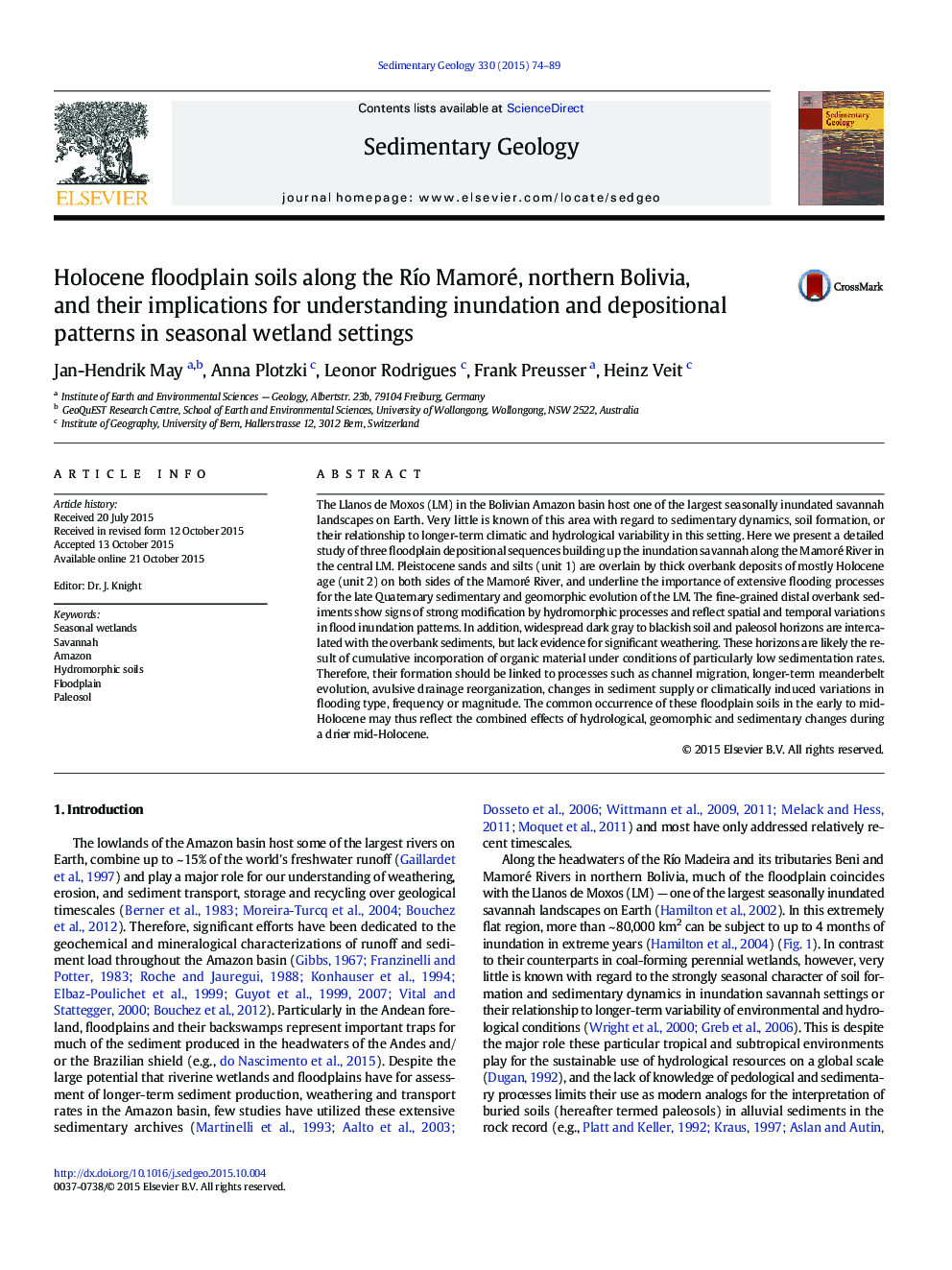| Article ID | Journal | Published Year | Pages | File Type |
|---|---|---|---|---|
| 4689108 | Sedimentary Geology | 2015 | 16 Pages |
The Llanos de Moxos (LM) in the Bolivian Amazon basin host one of the largest seasonally inundated savannah landscapes on Earth. Very little is known of this area with regard to sedimentary dynamics, soil formation, or their relationship to longer-term climatic and hydrological variability in this setting. Here we present a detailed study of three floodplain depositional sequences building up the inundation savannah along the Mamoré River in the central LM. Pleistocene sands and silts (unit 1) are overlain by thick overbank deposits of mostly Holocene age (unit 2) on both sides of the Mamoré River, and underline the importance of extensive flooding processes for the late Quaternary sedimentary and geomorphic evolution of the LM. The fine-grained distal overbank sediments show signs of strong modification by hydromorphic processes and reflect spatial and temporal variations in flood inundation patterns. In addition, widespread dark gray to blackish soil and paleosol horizons are intercalated with the overbank sediments, but lack evidence for significant weathering. These horizons are likely the result of cumulative incorporation of organic material under conditions of particularly low sedimentation rates. Therefore, their formation should be linked to processes such as channel migration, longer-term meanderbelt evolution, avulsive drainage reorganization, changes in sediment supply or climatically induced variations in flooding type, frequency or magnitude. The common occurrence of these floodplain soils in the early to mid-Holocene may thus reflect the combined effects of hydrological, geomorphic and sedimentary changes during a drier mid-Holocene.
